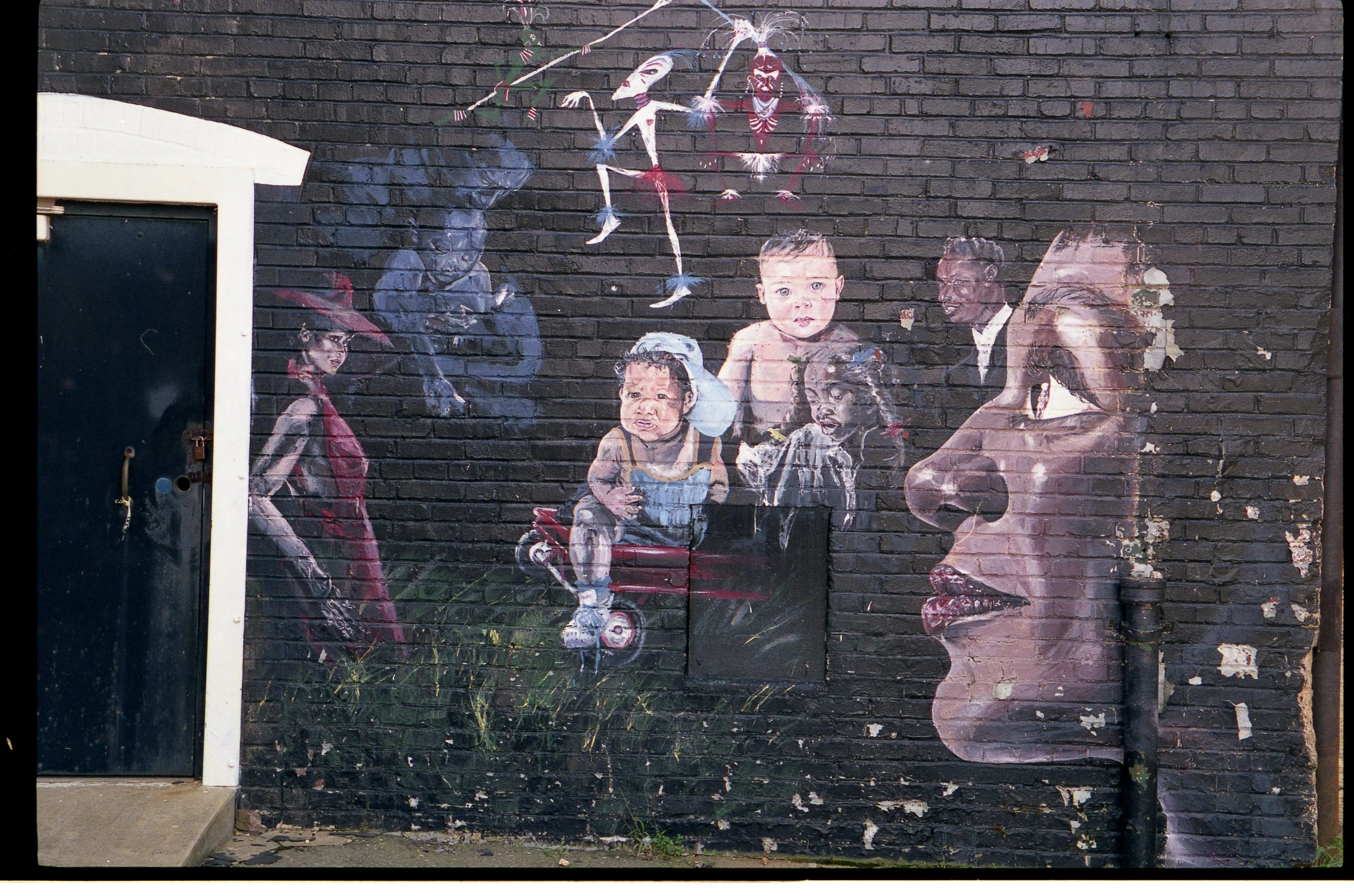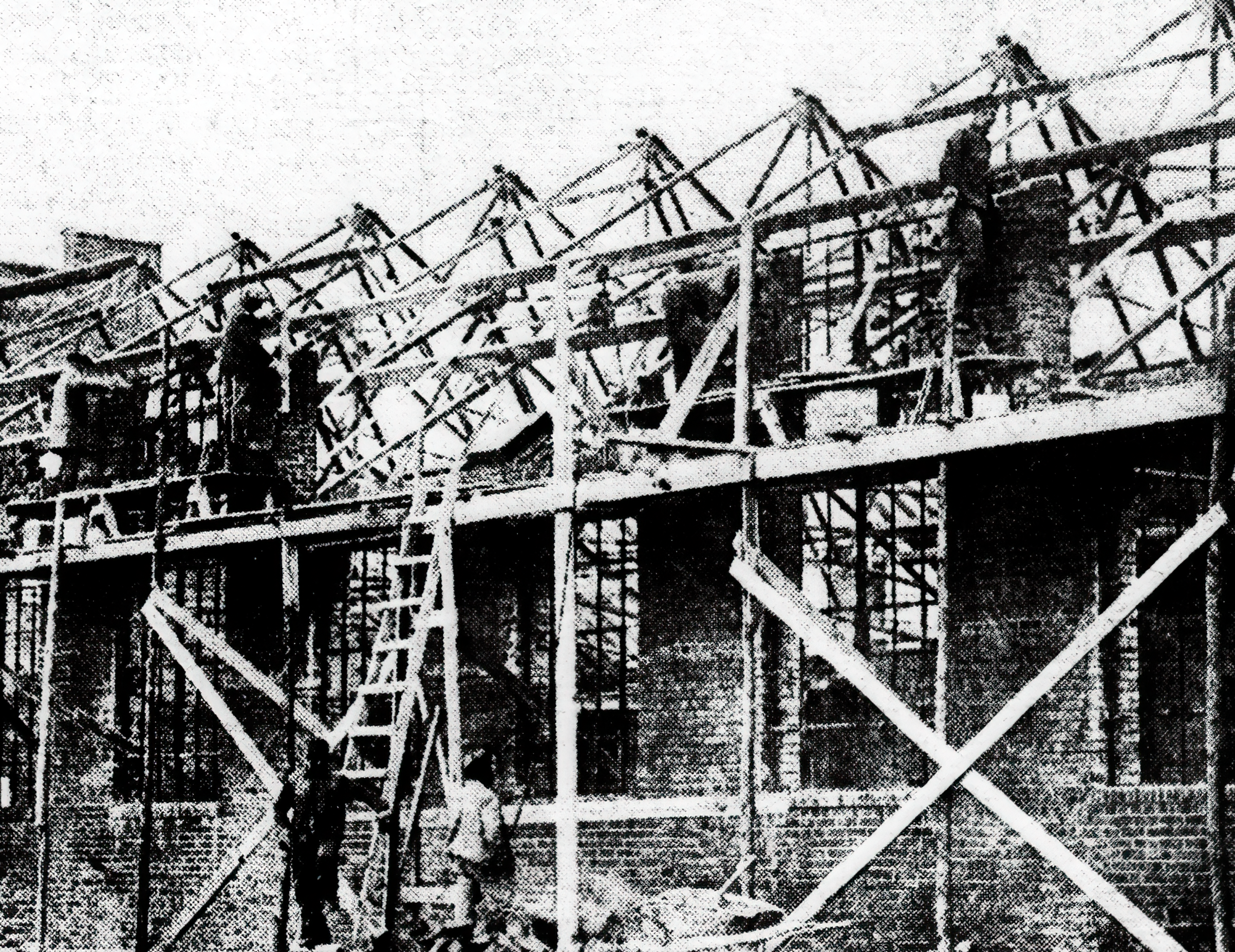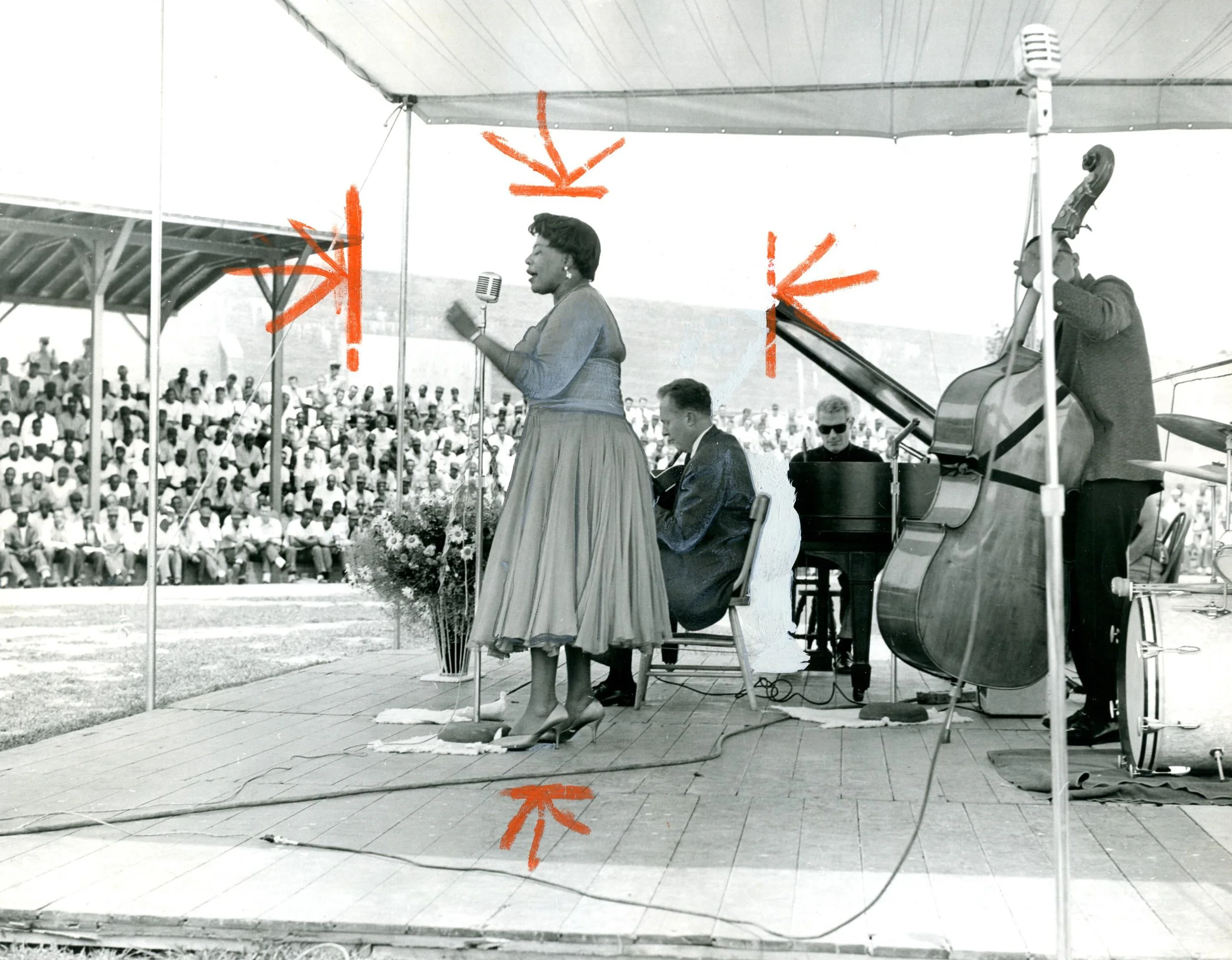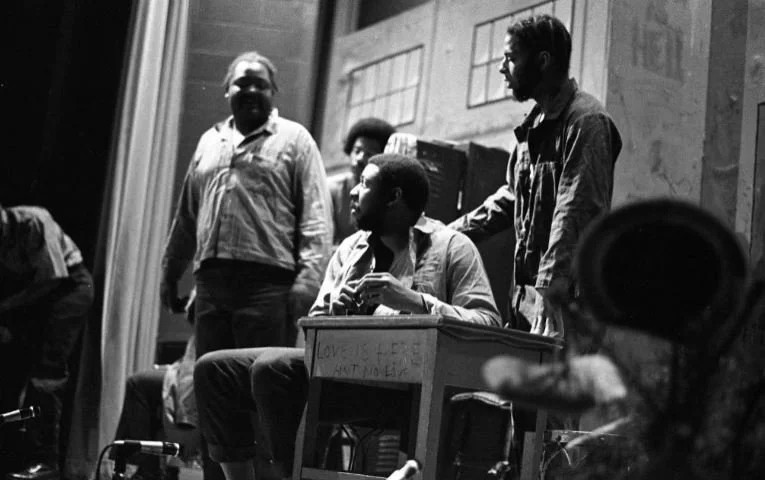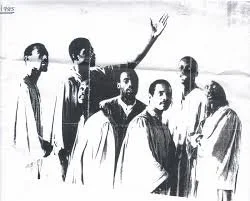The Black Arts Community at the Lorton Correctional Complex
Written by Katie Crooks
Edited by Nancy Hessler-Spruill
A Legacy of Creativity and Resilience
Black History Month is a time to honor the past, celebrate achievements, and recognize the contributions of Black individuals in all facets of society. Here in Lorton, Virginia, the Workhouse Arts Center sits on historic ground—the former Lorton Correctional Complex, a site with a complex and significant history. While the prison’s legacy includes systemic injustices and racial disparities, it was also home to a powerful and creative Black arts community that thrived within its walls.
From the early 20th century until its closure in 2001, Black men and women from Washington, D.C., were incarcerated at disproportionately high rates. By the 1980s and 1990s, 99% of the prison population was Black, a stark reflection of systemic issues in the criminal justice system. Yet within these walls, art became a form of resistance, rehabilitation, and cultural expression—mirroring the vibrant Black artistic movements that shaped Washington, D.C., and the nation.
Building More Than a Prison
When Lorton was first established as the Occoquan Workhouse and Reformatory, inmates were sent there not only to serve time but also to build the prison itself. With their own hands, they made the very bricks that would construct the facility’s iconic red-brick buildings. These men learned trades—becoming skilled craftsmen and artisans through job training programs. Despite the challenges of incarceration, they found ways to create, shaping both the physical and cultural landscape of the prison.
Prisoners Laying Brick, Occoquan Workhouse, March 1926. Courtesy of DC Archives.
Art as Expression and Rehabilitation
Even in the most difficult circumstances, art found a way to flourish inside Lorton. Inmates used found objects and scrap materials to create artwork, often gifting pieces to prison staff or sending them to loved ones. The Lorton Jazz Festival, a groundbreaking initiative led by Father Carl Breitfeller, brought legendary musicians like Ella Fitzgerald, Count Basie, and Louis Armstrong to perform inside the prison. These world-renowned artists played for free, recognizing the deep appreciation of their incarcerated audience.
Ella Fitzgerald performs at Lorton Reformatory, 1959. (Courtesy of the DC Public Library, Star Collection, Washington Post.)
Chuck Brown performing at the Lorton Correctional Complex.
Music also emerged from within. Chuck Brown, later known as the “Godfather of Go-Go,” honed his skills at Lorton, trading two cartons of cigarettes for his first guitar. His experience in prison became a turning point, leading to the development of Go-Go—a genre that remains the official music of Washington, D.C.
Inner Voices: Theater and Social Change
Theater, too, played a transformative role. Rhozier “Roach” Brown, a civil rights activist serving a life sentence, found solace in poetry—scratching verses into the dust beneath his bunk while in solitary confinement. His passion led to the creation of Inner Voices; a groundbreaking theatrical troupe made up entirely of Lorton inmates. Performing original works over 500 times outside the prison walls, Inner Voices used drama to challenge societal perceptions and inspire change. Brown’s leadership and talent ultimately earned him a presidential pardon on Christmas Day in 1974.
Inner Voices performing, December 1973. Broadside Photograph Collection, George Mason University Libraries.
Gospel and Redemption
The Amazing Gospel Souls, ca. 1985.
In the early 1980s, a group of incarcerated musicians formed The Amazing Gospel Souls, blending their R&B roots with gospel to create a new sound of redemption and faith. Founders Evangelist Kevin Petty, Minister Calvin Gorham, Daniel Wilkerson, Melvin Tuten, Edward "Brick" Bright, and Pastor Walter McCullough, Jr. transformed their lives through music, and today, they continue mentoring and uplifting those reentering society.
A Lens on Life Inside Lorton
One of the most revealing artistic projects to come out of Lorton was a photography class led by photographer Karen Ruckman. By placing cameras in the hands of inmates, the project allowed them to document their own experiences, capturing moments of humanity behind prison walls. These images, developed by the students themselves, provided an unfiltered look into their world, proving that even in confinement, artistry and storytelling could thrive.
Preserving the Legacy Through Art
Despite its moments of creativity and rehabilitation, Lorton was also marked by violence and harsh conditions, especially in its later years. However, the art produced within its walls left a lasting impact. Inmate-painted murals, such as the Live Forever Mural, remain as a testament to resilience, creativity, and the human spirit.
Inmate Painted Mural, Lorton Correctional Complex, ca. 1990s.
Today, many of the brick buildings built by incarcerated hands have been repurposed into the Workhouse Arts Center. Rather than erasing the site’s history, the Workhouse embraces it—offering exhibitions, art classes, theater performances, and educational programs that continue the legacy of artistic expression and social change.
If you’d like to explore this history further, visit the Lorton Prison Museum, where you can learn about the site’s transformation from a correctional facility to a thriving arts center. You can also explore the Lucy Burns Gallery, dedicated to the suffragists imprisoned at Lorton during the fight for women’s voting rights.
Honoring the Past, Inspiring the Future
The Lorton Correctional Complex was a place of struggle, but it was also a place of profound creativity and resilience. The stories of the artists, musicians, and performers who emerged from within its walls remind us that art has the power to heal, transform, and transcend even the harshest conditions.
As we celebrate Black History Month, let’s honor these voices and ensure their stories continue to be told. Visit the Workhouse Arts Center to experience how art continues to build community, create dialogue, and inspire change.
____________
Want to Learn More?
Visit Us: Workhouse Arts Center
Explore the Lorton Prison Museum and Lucy Burns Museum: Learn More
Check Out Our Current Exhibits & Events: View Calendar
Explore Our Visual Arts Classes: View Classes
Discover Freedom Through the Arts Program for Returned Citizens: Learn More

